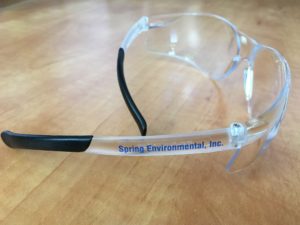The March HAZWOPER Challenge is now closed. Thank you for participating. Please come back April 1st for our next HAZWOPER Challenge!
Author Archives: Rory McKinnon
2024 NEW OSHA 300A Posting and Reporting Requirements
Hello 2024! Did you know there are new requirements for companies to electronically submit workplace injury and illness data to OSHA? There is and it’s also time to prepare, certify and post your OSHA 300A Annual Summary of workplace injuries and illnesses in your workplace. Under the new rule, the following establishments have to submit electronically:
• Designated industries that had a peak employment of 100 or more employees during the previous calendar year that are listed in Appendix B to Subpart E of 29 CFR Part 1904.
• Establishments with 20 to 249 employees in certain industries listed in Appendix A to subpart E of 29 CFR Part 1904.
• Establishments with 250+ employees in industries that must routinely keep records.
If employers in State Plan states (e.g. Washington) have questions about their obligation to submit injury and illness information, please contact your State Plan office.
Your workplace Annual Summary must be posted from February 1st to April 30th. Electronic reporting is also due by March 2nd.
Click here for the PDF versions of the OSHA 300 forms series or here for an updated fact sheet on OSHA 300 reporting.
February HAZWOPER Challenge
January HAZWOPER Challenge
Permanent Wildfire Smoke Rule Coming Online!
Washington State Department of Labor & Industries (L&I) has announced the new WAC 296-820 for Wildfire Smoke will be effective January 15, 2024 for all Washington employers. Washington has been operating under temporary emergency rules since 2021. The new regulation will apply year-round to aid employers in providing a safe work environment for their employees during wildfire smoke conditions.
Areas of Washington State have been devastated by wildfires and wildfire smoke from surrounding areas which have created hazardous working conditions. In the new guidance, employers and employees will find new guidance for worker protections based upon the Air Quality Index (AQI) which is available at Washington Ecology’s “Air Quality WA” or EPA’s “AirNow”, among others. The PM 2.5 AQI will trigger implementation of plans, training, and Personnel Protective Equipment (PPE).
For more information, check out the L&I Wildfire Smoke resource page for access to the new rule, plan templates, and training materials.
December HAZWOPER Challenge
November HAZWOPER Challenge
October HAZWOPER Challenge
Chemical Security – It’s Everyone’s Business!
As more and more chemicals are used throughout the world to provide for our daily needs, the threat surrounding chemicals also grows. Chemicals can be used in many applications to harm people, wildlife, or the environment. There have been many instances in history where chemicals were used in terrorist activities such as bombs, gas releases, or poisonings. The government has utilized the Chemical Facility Anti-Terrorism Standards (CFATS) as a means to combat the illegal procurement of dangerous chemicals and enhance security initiatives for facilities that engage with targeted chemicals. Recently the federal government has let the funding for CFATS lapse, so the program standards can no longer being enforced by the Cybersecurity & Infrastructure Security Agency (CISA).
According to the FBI, attempted fraudulent purchases of dangerous chemicals have been steadily increasing in recent years. Without the tools, oversight, and background programs that CISA provides through CFATS, it now falls on the facilities to clamp down on their chemicals and be more diligent in their security efforts. CISA is urging lawmakers to approve funding for CFATS to return the program to operational status, but until that happens, chemical managers need to be on heightened alert. There are still tools available that facilities can use to aid them such as ChemLock. According to CISA, “the ChemLock program is a completely voluntary program that provides facilities that possess dangerous chemicals no-cost services and tools to help them better understand the risks they face and improve their chemical security posture in a way that works for their business model.”
For more information regarding the ChemLock, click here.
If you have any questions regarding the programs, drop us a line. We’d be happy to assist.

